

sponsors:

Gradac - Bapska
Excavation 2007
![]()
After last year’s (2006) symbolic start of protective archaeological research of the site (60 m2, depth 20 cm), July 2007 saw the continuation of work on the earlier opened trench B-G 06, located in the north-east corner of the settlement.
This year (2007) the excavation area has been widened to 120 m2, but the depth remained at last year’s level, since the house discovered in the isolated layer was to a certain extent preserved and detailed excavations had to begin earlier than expected – covering the remains of the house and its immediate surroundings.
Since the plateau descends to the north, erosion totally ruined the assumed Baden culture horizon and, in all likelihood substantially, the remains of the last phase of Vinča culture.
Through intensive erosion the layer of earth covering the house has only recently turned into humus. As a result, the findings from the house are well-preserved. A length of 10 m of House 1 has been preserved, but its northern edges enter the northern profile of the trench and, at the moment, it is not possible to accurately establish its real dimensions. Although the floor of the house was completely destroyed by ploughing and its edges covered with rubble, a width of 4,5 metres can be determined.
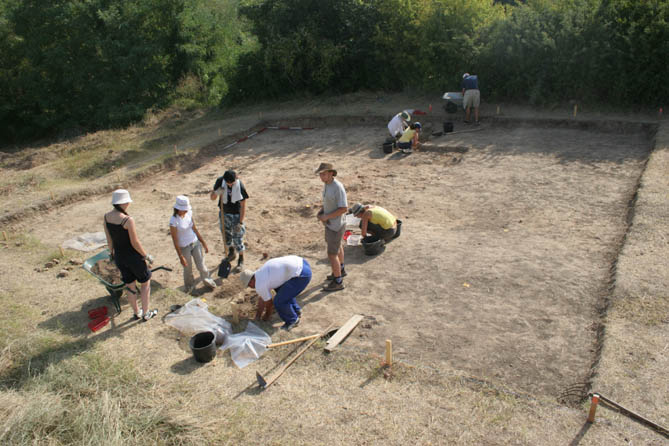 Part of a trench...
Part of a trench...
The most important finding of this year’s campaign is probably a storeroom containing a large quantity of carbonized wheat. The excavated area was sampled and processed through flotation, using an Ankara machine.
Flotation and archaeobotanical analysis was led by Katerina Moniaki, an archaeologist from the Aristotle University of Thessaloniki, currently working on a Master’s thesis on archaeobotanical remains.
It is important to point out that the pit in which the seeds were found was only partly opened while the house was cleaned, so the largest part of the material is still waiting to be taken out and sent to Thessaloniki for analysis. The analysis of the archaeobotanical remains is already in process. Some of the findings will be sent for radiocarbon analysis but not until next year (2008), due to this year’s campaign’s financial constraints.
The pit was carefully protected from the influence of atmospherics and any kind of mechanical damage. From a sample of 4 liters, the archaeobotanical remains showed that the inhabitants of the house preferred hulled wheat and stored it in the form of spikelets, for protection against the pests that attack stored grains. Further analysis will reveal more about the agricultural activitites in the site.
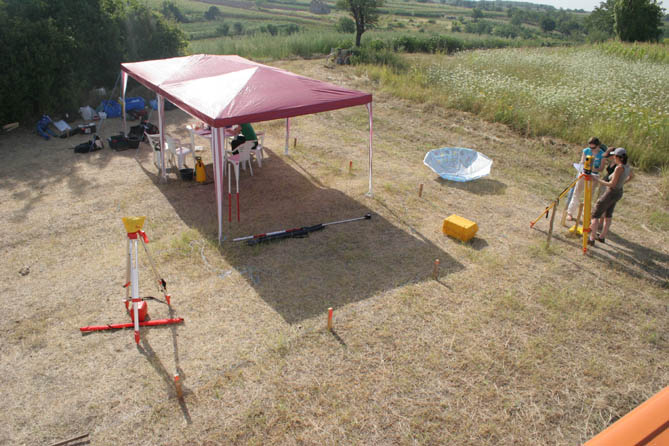 Base camp on the site
Base camp on the site
Apart from archaeological works geo-sounding was coducted at various points inside and around the site.
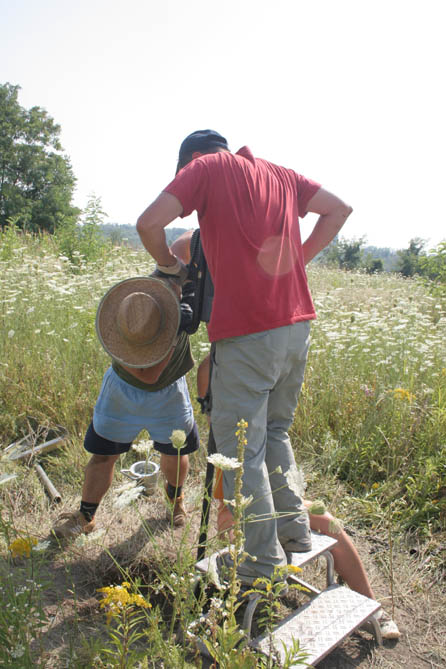
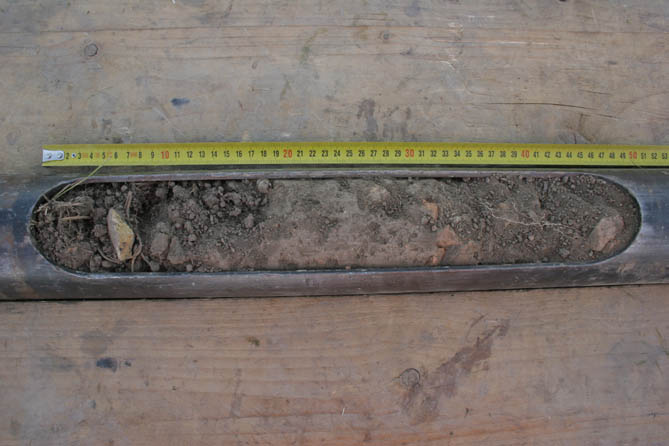 geo-sounding in process...
geo-sounding in process...
Ceramics and lithic material are of the same contour and shape as those found last year, while this year the number of red-painted ceramics has increased (probably due to the greater area and depth covered by the excavations).
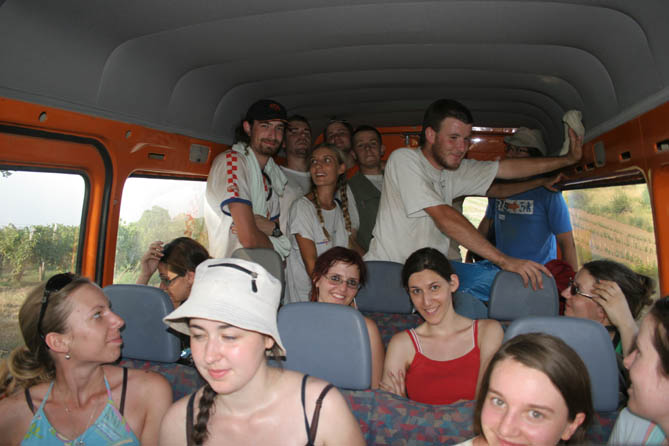 on the way to lunch....
on the way to lunch....
Besides the weights, harpoons, bone needles, animal bones and, once again, a few thousand pieces of ceramics, a fragment of a tool made of obsidian was discovered, which, together with last year’s spondylus shell, proves that the inhabitants of the Neolithic settlement at Gradac used these two highly rated Neolithic valuables. As part of the process of analyzing the origins of material from across Croatia, the Obsidian will, in 2008, be sent to the Budapest Nuclear Research Center (KFKI) for PGA analysis.
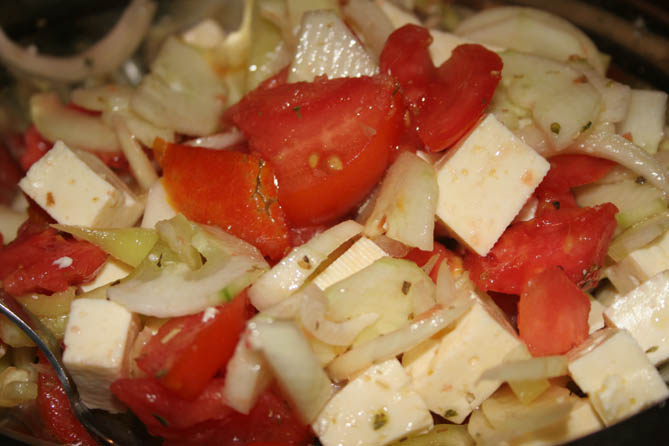 A selection from a thematic lunch: real horiatiki
(Greek salad) made by the Greek crew
A selection from a thematic lunch: real horiatiki
(Greek salad) made by the Greek crew
All of the on-site research has been conducted by the students of archaeology at the Department of Archaeology of the Faculty of Arts at the Zagreb University. In 2007 they were joined by their colleagues from Tübingen and Thessaloniki.
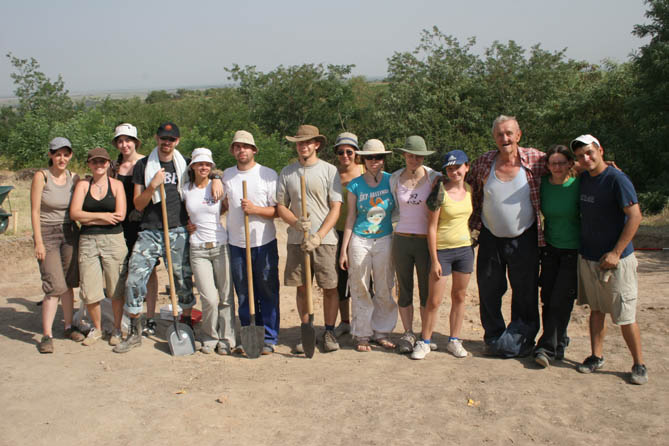 photo with mr. Vidaković, team member in 1964
campaign
photo with mr. Vidaković, team member in 1964
campaign
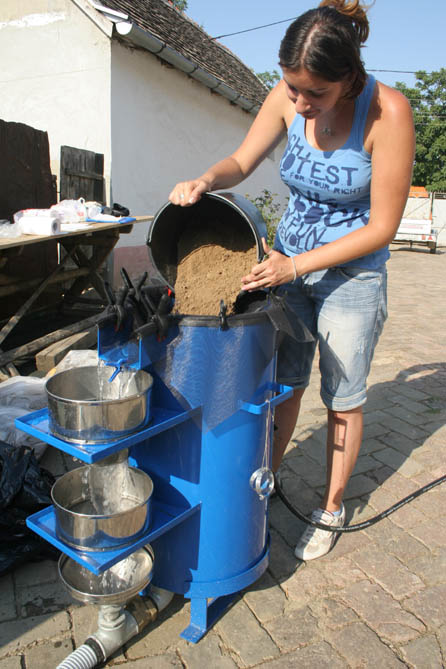 flotation...
flotation...
translation by Suzana Čule
uploaded: 06.02.2008.